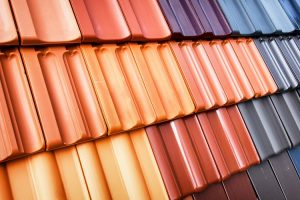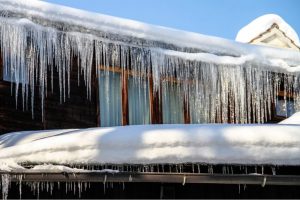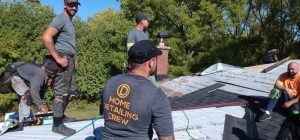Roofing Fire Hazards and How to Reduce their Risks
Jan 24, 2023

Did you know that one in five of the most common types of house fires originate from the roof? Protecting your home from potential fire hazards is probably one of the foremost priorities when moving into a new home or upgrading an existing one. The main reason for this is the use of highly flammable materials such as fiberglass, untreated wood shakes, etc. in the insulation of the attic or roof. Sparks from barbecue, bonfires, cigarettes or fireworks can also be equally destructive.
Torch Down Roofing – Beware!
Torch Down Roofing, mostly used for flat or low-slope roofs, is made of modified bitumen attached to fiberglass with a flame torch. This type of roofing is a preferred choice of several roofing contractors in Southern California as it is easy to apply, is durable and adaptable. However, this type of roofing material can be very dangerous.
Any kind of overheating caused at the time of installation or after can put the place up in flames. Fiberglass and bitumen, the primary materials used in torch down roofing, are highly flammable. Hence, as easy and durable as the method may be, it is strongly discouraged by building and neighborhood associations.
To safeguard homes against potential fire hazards, property management companies, government building code makers and other relevant stakeholders are turning to safer roofing material options to prevent fire disasters. A number of these options are processed and treated alternatives of the flammable materials rendering them safe for roof coverings.
Treated wood shakes
Untreated wood shakes, commonly known as tinder are highly flammable. On the other hand, treated wood shakes soaked in fire retardant can be a comparable alternative.
Asphalt Shingles
Certain types of asphalt shingles can be good substitutes for bitumen shingles used for torch down roofs. Be sure to check the manufacturer’s brochure for ratings.
Metal Tiling
Several types of metal can be used for roofing – copper, steel, etc. But specifically, metal tiles or sheets are highly fire resistant. Metal tiles must be installed with a fireproof underlayment for maximum effect.
Clay Tiling
Clay is one of the most underrated roofing materials. It is highly fireproof and gives a great look. However, it is important to bear in mind that clay tiles must seal the surface area properly to prevent sparks from trickling down the roof.
Rubber Tiling
Recycled rubber tiles are efficient roofing materials as they are light in weight and very eco-friendly. They are affordable and work best with a fire-resistant underlayment.
Slate
Slate is perhaps one of the most classic, elegant options for roofing material. You saw them in the houses of the 1950’s and you see them even now. The only drawback of slate is it carries weight, so your roofing contractor must assess the roofing structure before opting for slate.
Fibre Cement
Fibre Cement shingles made from cement, wood and sand are an excellent roofing material. A gypsum-board underlayment is necessary for maximum impact.
Masonry
Brick or stucco walls may be expensive but they provide years and years of protection if maintained properly. Just like fibre cement, an underlayment of gypsum board is essential for best results.
A roofing contractor will be in the best position to make recommendations about the best options for your home. However, regardless of the material you choose, any kind of cracks or gaps must be sealed off to prevent any embers, sparks or smoke from penetrating through them. Ensure that the roof and attic are always clean and clear of any flammable items including dry leaves, twigs, etc. Also make sure that spark screener of the chimney is in good working condition to prevent sparks or embers from leaving the chimney. Timely inspections are essential to check for cracks and leaks.
Safety is an individual as well as collective responsibility. Do not hesitate to ask questions to your builder, property management company, etc. if you are skeptical about the roof coverings for your house. Most fires are preventable and require some amount of responsible thinking to make the home and neighbor safe and secure for all.
If you have any questions about different roofing materials and how well can they stand up to fire hazards please don’t hesitate to call us at (905) 387-3000 or contact us using the contact form on our website. We’d love to hear from you!





